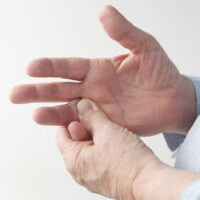6 mistakes to avoid while wearing contact lenses

Environmental pollutants, genetics, injuries, age, and other factors can affect one’s eyesight. Luckily, several visual aids are available in the market to help people see better, contact lenses being a popular choice. These lenses are placed over the eye’s cornea to correct refractive errors. Some people also wear them for cosmetic purposes. In either case, one should avoid the following mistakes while wearing contact lenses to ensure they work well and don’t cause complications.
Sleeping with contact lenses
When one sleeps, the body works to recover and rejuvenate organs, including the eyes, from the stressful situations that may have occurred during the day. Sleeping with contact lenses can interfere with this function. Moreover, when closed, the eyes don’t receive sufficient oxygen to fight germs, and wearing contact lenses may block the oxygen supply further.
Not cleaning the lenses
Some people don’t clean their contacts for days. This is a terrible mistake that can lead to bacteria settling on them. When such lenses are worn, they can increase the risk of infection and inflammation. They can also lead to keratitis, a painful eye infection of the cornea. One must clean their contact lenses regularly and ensure they are hygienic when placed on each eye.
Cleaning with water
Unfiltered water contains harmful bacteria and unhealthy microorganisms. When one washes their lenses with it, the bacteria may get transferred to the lenses. Hence, individuals should use a dedicated contact lens cleaning solution recommended by experts. These solutions help eliminate bacteria and protect the eyes.
Showering with contact lenses
Some people shower with their contacts on to save time removing them. It is a massive mistake because, if the lens is exposed to tap water, it might put one at risk of infections like acanthamoeba (caused by amoeba). Water may get underneath the lens and expose the cornea to the amoeba, resulting in the infection. While it takes a few minutes, experts recommend removing the contacts before entering the shower or the bath. One should also speak to an optometrist to understand whether swimming with contact lenses is okay.
Using lenses past the expiration date
Many use their contact lenses past the expiration date to save a few bucks. However, this might be detrimental to vision health. The lens might accumulate bacteria after a certain period, leading to pink eye or other infections. Therefore, users must pay attention to the expiration date and never use lenses beyond the set timeframe.
Using the wrong cleaning technique
Simply dipping the lenses in contact solution isn’t how they are cleaned. One must follow specific protocols to remove bacteria and other debris from the lenses effectively. While each type of lens has unique care instructions, here are a few common ones to follow:
- Wash and dry both hands before handling the lenses to avoid the transfer of bacteria.
- Squirt fresh, new contact solution into a hand.
- Rub the contact lenses gently between the thumb and pointer finger while avoiding them from coming in contact with fingernails. This step is critical as the friction assists in removing bacteria.
- Wash both hands once more with soap and water.





